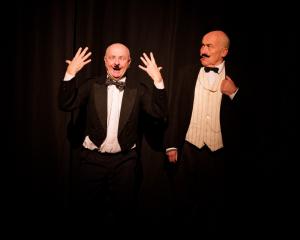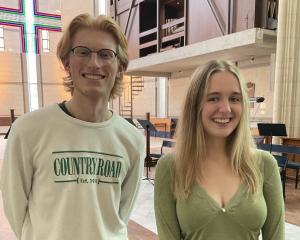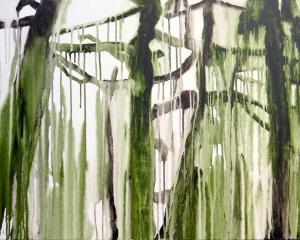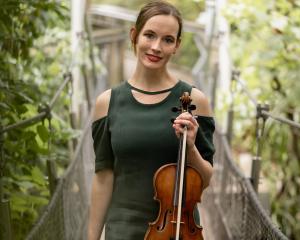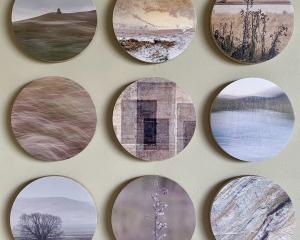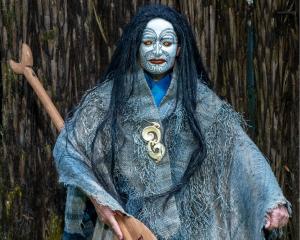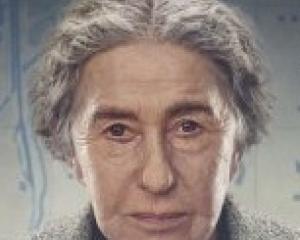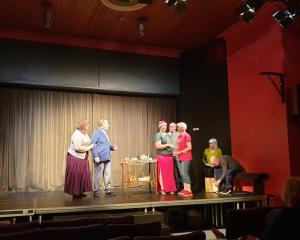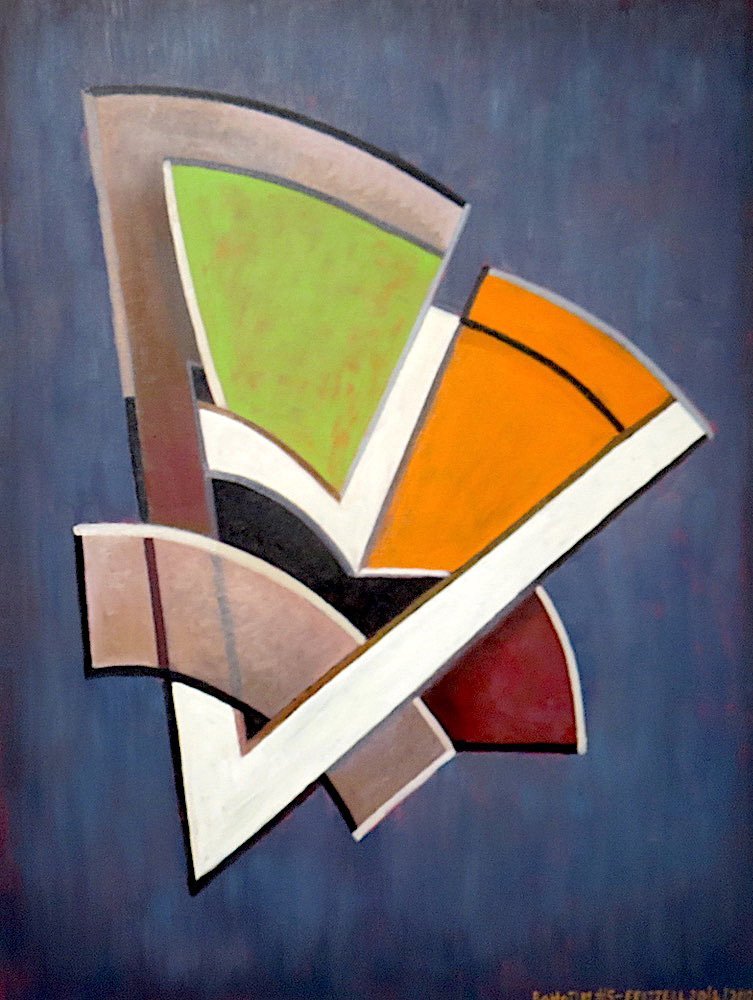
(Milford Gallery)
Throughout his illustrious career, Dick Frizzell has created paintings which can be grouped by several recurring themes. Now, for the first time, the strands of his oeuvre have been brought together into one exhibition, "Quartermain".
Frizzell is perhaps best known for his exploration of kiwiana, often using the changing cultural weight and meaning of the tiki. In this exhibition, a series of tiki have been deconstructed and presented in semi-abstract modernist style. The lines are still present, but have been reassigned. The work is startling, and brave in its acknowledgement of the potential for controversy of the "appropriation" of a recognised taonga.
The discussion of New Zealand’s sense of identity and place are also reflected in Frizzell’s landscapes, scenes in which the viewer feels they are part of the scene, on the road travelling the land. One of the stars of the show is in this category, an epic morning scene of Alexandra.
The history of art is close to the forefront in Frizzell’s other images.
Academic art is a start point for the artist’s fine nudes and a beautifully worked large-scale still-life; the artist’s skill with the palette knife coming to the fore in the latter. Modern sculpture also comes under the artist’s scrutiny in works based on the kinetic art of Tinguely and Calder.
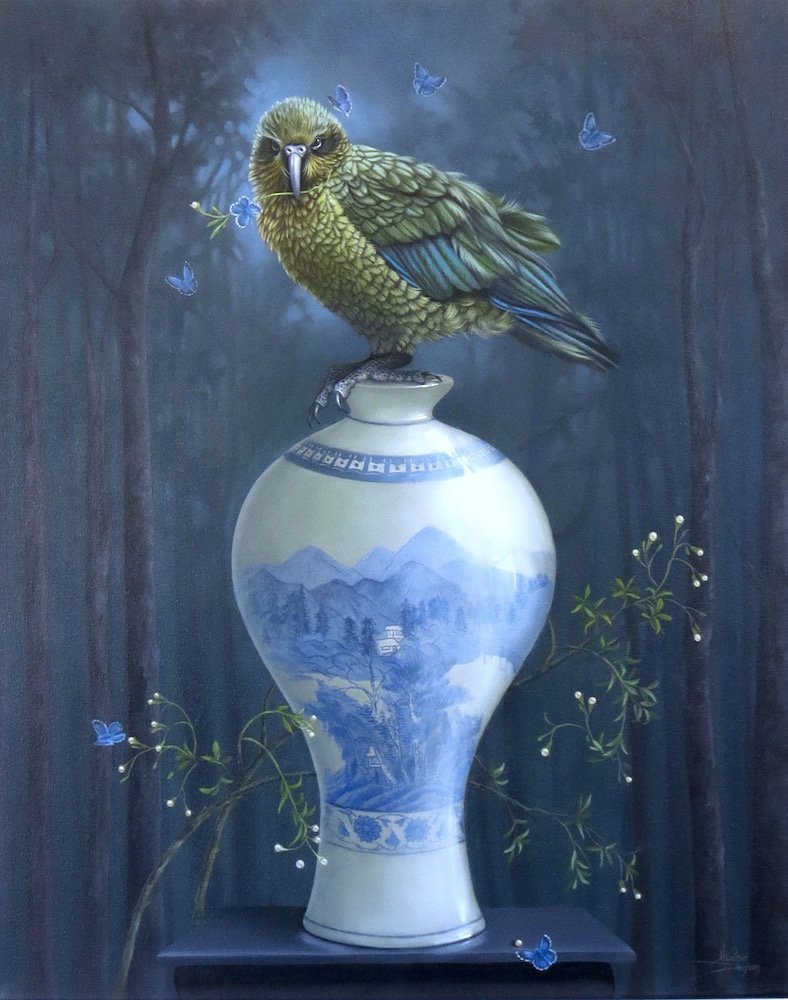
(The Artist’s Room)
The prosaically titled "A Joint Exhibition" features work by two wildlife artists, Karen Baddock and Heather Denison. The two series of realist and magic-realist paintings complement each other well, despite the different styles of the two artists.
Baddock’s art focuses entirely on its subject, typically one of New Zealand’s smaller native birds (robin, fantail, waxeye), and often accompanied by a bumblebee. The artist beautifully captures the life in the eyes of the birds, and their plumage (and the bees’ fur) is obsessively and excellently represented. The birds seem almost as if they will fly off the canvas. Each creature is shown against an empty white background, and often in an ornate white frame, separating it from its natural state and allowing us to focus entirely on the animal’s life and appearance.
By way of contrast, Denison’s creatures are placed in magic-realist settings, the slight surrealism of their surroundings providing the art with a feeling of narrative. Goats and fawns relax on furniture, and owls, kaka, kea, and robins are seen alongside willow-pattern ceramics and other antiques. At times, the line between indoor and outdoor scene is lost entirely to create a haunting half-world. The generally low-key and naturalistic backgrounds create a pleasant juxtaposition with Baddock’s more austere white.
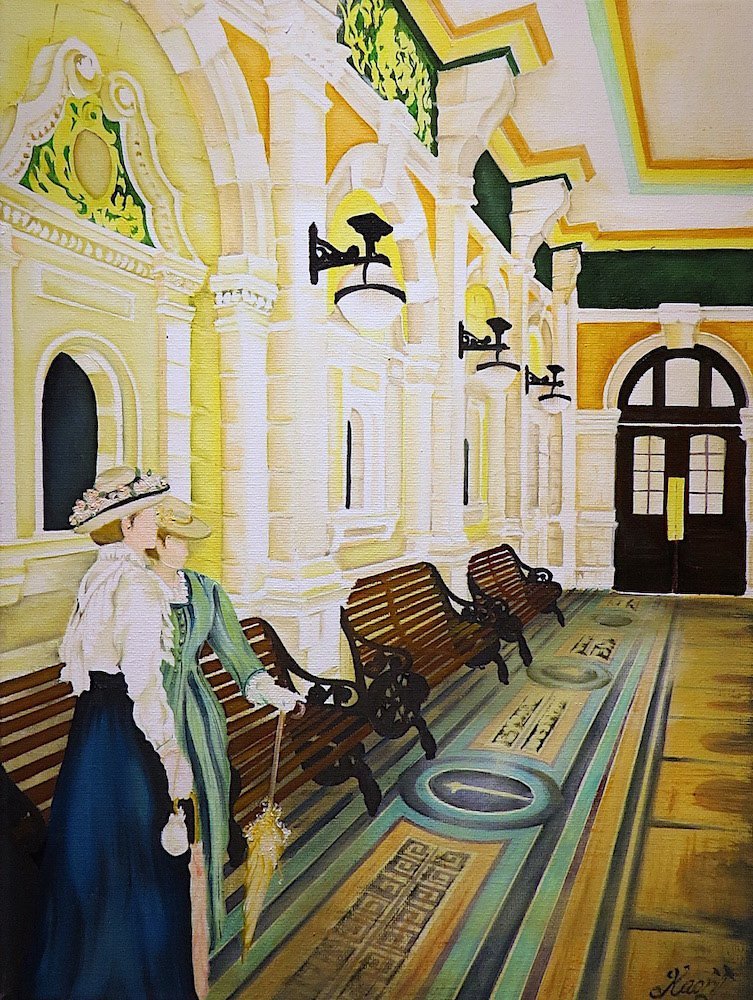
(Koru Gallery)
Birds are also a major subject at Kaori Jackson’s untitled exhibition at Koru.
In Jackson’s paintings, birds are paired with native flora to create scenes which are perhaps best described as painted illustrations. Though not adhering to Baddock’s sheer plain backdrops, the birds and plants are depicted isolated a gentle or blurred background. In several of the works, colour as much as composition has become the major point from which the artist has worked, as is evinced in the titles of her "Colour Collection" series. In two intriguing pieces, mirrors have been incorporated in the works, with images of birds and native harakeke flax forming a surrounding framing device. While an interesting experiment, I’m not convinced these pieces are completely successful.
Birds also appear in several historical location works, with branches bedecked by birds forming natural framing devices for scenes of Dunedin Railway Station, Rotorua’s historic bath-house museum, and Invercargill’s Catholic basilica. The birds become charming "eye candy" in the realistic scenes.
Perhaps the most impressive work in the exhibition is, ironically, the only one not containing images of bird life. Waiting for a Train is a delightful image showing two Edwardian women in the central concourse of Dunedin Railway Station. The work is a pleasant, gentle image which is well composed and achieves its aim perfectly.
By James Dignan

